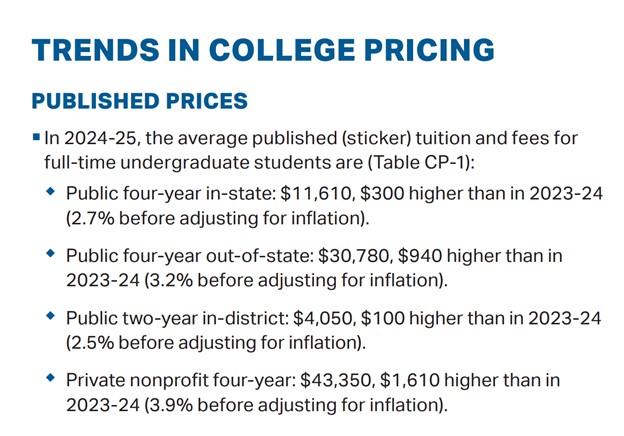This Fortune magazine headline caught my eye: “Meet a 23-year-old electrician who was a ‘good student’ but skipped college to join Gen Z’s blue-collar revolution. He makes 6 figures.” He may have ‘skipped’ college, but he didn’t skip the training. He earned his training as an apprentice and then became a certified electrician.
The ‘blue-collar’ trend toward workforce training after high school illustrates the many paths to careers in addition to what we traditionally think of as college, including apprenticeships, trade school, vocational training, and professional credentialling. Career training programs can have minimal, and relatively accessible costs. As you think about how to save for the possibility of career and technical education, consider the following:
Make a Plan. Setting an education savings goal can help you stay on target and on track. To make a plan, start with an online savings calculator. Many 529 plans have state-specific calculators that give you an estimate of what future education expenses will be as you set your desired savings goal.
Save Systematically. Whether you set up recurring contributions from a bank or payroll direct deposit, saving systematically is an automated way to build your savings quickly. Consider directly depositing $150 per pay period into your 529 account. After 26 pay periods in a calendar year, you would have nearly $4,000 in contributions to your 529 account.
Adjust as Needed. At least once a year, take a moment to review your contributions, your investment growth, and the needs of your family, and adjust your automatic contributions. Increasing automatically is an option for many 529 plans, but it’s never a bad idea to take the opportunity on 529 Day or during college savings month to boost your contributions. It’s often said that when your child reaches their next milestone (out of diapers, out of daycare, etc.), it’s a good time to increase the contribution amount. Whatever works best for your family, be sure to assess and adjust.
Why this Matters: Making a plan and sticking to it can accelerate your education savings and relieve the financial burden of costs associated with your chosen path when the time comes, especially when you are saving for more than one beneficiary.
About the author: Lael M. Oldmixon, M.Ed. is the Executive Director of the Education Trust of Alaska, which offers Alaska’s three 529 plans, Alaska 529, the T. Rowe Price College Savings Plan, and the John Hancock Freedom 529. She lives in Alaska with her spouse, two children, and two dogs.

